centuries

 Baljenac (also known as Bavljenac)…a tiny island in the Adriatic Sea, just off the coast of Croatia, seems to be showing up all over the internet these days. When you first see it, you will be…rather shocked by its appearance, because well, it really looks like a giant fingerprint. My first thought was, “Is that natural, or man-made?” Well, of course, the structures are man-made, but their original intent was not to create a giant fingerprint. These dry-stone walls that make up the web that covers the island, have been there for centuries, and their purpose is very different than how they make the island look from the air.
Baljenac (also known as Bavljenac)…a tiny island in the Adriatic Sea, just off the coast of Croatia, seems to be showing up all over the internet these days. When you first see it, you will be…rather shocked by its appearance, because well, it really looks like a giant fingerprint. My first thought was, “Is that natural, or man-made?” Well, of course, the structures are man-made, but their original intent was not to create a giant fingerprint. These dry-stone walls that make up the web that covers the island, have been there for centuries, and their purpose is very different than how they make the island look from the air.
The island is located in the Sibenik archipelago on the Dalmatian coast. The island is quite small…just .75 square miles, and it is completely covered by the web of dry-stone walls. The island’s oval shape along with the web of walls makes it look amazingly like a fingerprint. The long lines of low walls, combined with the oval shape bring about the amazing resemblance. Apparently, these dry-stone walls are not that uncommon in west European nations such as Ireland, England and Scotland, much of Croatia’s countryside. The dry-stone walls hug many of these island nations. Originally, they were used for centuries, to mark boundaries between adjacent agricultural lands. That might make sense, but the walls on Fingerprint Island don’t seem to allow for a very big garden, much less be a separation of agricultural lands. Aside from defining agricultural boundaries, the walls also keep out strong winds known as “Bura” that would make cultivation impossible in exposed locations along the coastline. The walls, however strange and however strange they make the landscape look, served a great purpose, especially since they withstood the test of time.
The walls are unusual because they were built without mortar to hold the stones together. Instead, builders carefully select stones and stack them snug together like puzzle pieces. That seems like a recipe for the collapse of the walls, and yet they have stood in place for centuries. They did have large amounts of rock to work with, because much of Croatia’ coastline is characterized by karst topography…meaning it’s rocky. If  you’re going to grow much on rocky terrain, you have to remove the rocks. So, the farmers painstakingly picked rocks out of the soil by hand and then used the same stones to construct walls around geometric plots. The work, planned to create boundaries, created grids in some cases…and the grids stretched for miles. That seems odd in itself, but in the case of Baljenac (Fingerprint Island), an island just .31 miles long, the walls stretch for 14.29 miles. Because of the length of time the grid has been there, the Croatian government has been pushing the UNESCO to include the island and its dry-stone walls in their World Heritage Sites list.
you’re going to grow much on rocky terrain, you have to remove the rocks. So, the farmers painstakingly picked rocks out of the soil by hand and then used the same stones to construct walls around geometric plots. The work, planned to create boundaries, created grids in some cases…and the grids stretched for miles. That seems odd in itself, but in the case of Baljenac (Fingerprint Island), an island just .31 miles long, the walls stretch for 14.29 miles. Because of the length of time the grid has been there, the Croatian government has been pushing the UNESCO to include the island and its dry-stone walls in their World Heritage Sites list.
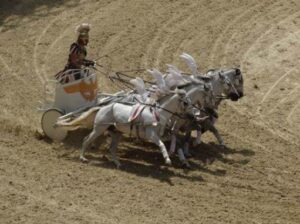
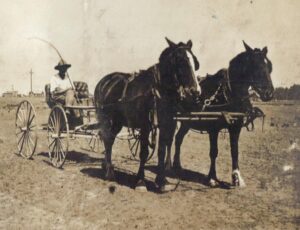 Road rage is a common expression these days. In fact, you would have to be living under a rock not to know what road rage is. Most of us think that road rage is something that has come about as there are more and more vehicles on the road; as well as the fact that so many people are so busy, and stress is an ever-present part of life. While I personally believe that road rage has really gotten out of hand, I suppose that it has actually taken centuries…yes, centuries to get there, but it really has gotten way out of control.
Road rage is a common expression these days. In fact, you would have to be living under a rock not to know what road rage is. Most of us think that road rage is something that has come about as there are more and more vehicles on the road; as well as the fact that so many people are so busy, and stress is an ever-present part of life. While I personally believe that road rage has really gotten out of hand, I suppose that it has actually taken centuries…yes, centuries to get there, but it really has gotten way out of control.
In fact, road rage didn’t even begin with the invention of the automobile. There are instances of “road rage” even as far back as the days of horses and chariots, as well as occurrences during the horse and buggy days, not to mention the days of bicycles. It seems that people have always argued over the right-of-way. The reality is that people have always argued over rights in general. For some people, when they get in the driver’s seat, many people check all sense of calmness at the entrance to the vehicle. These same people can’t seem to control their tempers and look beyond the mistake the other driver might have made, to notice that the offending driver might have been having a bad day.
Don’t get me wrong, I have been guilty of road rage too, and looking back I am pretty ashamed of myself for it. I have also been “guilty” of anti-road rage too, and I always walk away feeling awful. I far prefer to see the smile on the face of the offending person, who’s heart has been racing in anticipation of the screaming rage that is coming their way…the screaming rage that doesn’t come. Then, when they see the smile on my face telling them that all is well, and they aren’t going to get yelled at, their face floods with relief. I’m telling you, there is no better feeling behind the wheel than that.
In the instance I am referring to, I was at a traffic light waiting for my turn to go. The light changed to green, 
 and I prepared to go, when a car ran the red light. As she started into the intersection, her eyes were a big as saucers. It was my chance to change the situation. I smiled and waved her through the light. Shocked, she smiled back, and I can tell you that we both went to work that day feeling a lot better than we had just moments before. If only everybody just took a breath and smiled, instead of raging.
and I prepared to go, when a car ran the red light. As she started into the intersection, her eyes were a big as saucers. It was my chance to change the situation. I smiled and waved her through the light. Shocked, she smiled back, and I can tell you that we both went to work that day feeling a lot better than we had just moments before. If only everybody just took a breath and smiled, instead of raging.
 For centuries, I think most people thought Earth was alone in the universe, at least when it came to planets. It was inevitable that people would decide that they wanted to know more about the numerous stars, the moon, and the sun. Once the telescope was invented, with the earliest workings towards the design of the refracting telescope being made by German-Dutch lensmaker Hans Lippershey in 1608, people, or at least a few people, were able to see the things that really existed beyond Earth’s atmosphere. I can only imagine the shock as the first viewing proclaimed, quite loudly, that we were not alone in the universe…not even in the realm of planets, not to mention galaxies.
For centuries, I think most people thought Earth was alone in the universe, at least when it came to planets. It was inevitable that people would decide that they wanted to know more about the numerous stars, the moon, and the sun. Once the telescope was invented, with the earliest workings towards the design of the refracting telescope being made by German-Dutch lensmaker Hans Lippershey in 1608, people, or at least a few people, were able to see the things that really existed beyond Earth’s atmosphere. I can only imagine the shock as the first viewing proclaimed, quite loudly, that we were not alone in the universe…not even in the realm of planets, not to mention galaxies.
Thinking about the vastness of the universe has a tendency to make you feel very small, and I don’t suppose many people in the 1600s were very comfortable with that. These days the thought of the other planets in our galaxy doesn’t really bother us, and in fact it seems completely normal to us. As my husband, Bob and I have been going on our nightly walks, I have been watching the movement of several planets…namely Mars, Jupiter, and Saturn. Just the thought of these huge, star-like celestial bodies, at least to the naked eye, makes me think about how amazing God’s creation is. I have been able to picture in my mind, how these planets look in the universe, and now, the idea that they are stars seems absurd. Of course, my own “revelation” of that fact came centuries after the great men of science figured that fact out, and of course, that “revelation”didn’t creep into my mind today, but was rather taught to me over the years of my schooling. Still, sometimes while you know something is a fact, the enormity of it takes much longer to fully register in your head. That is the way i feel about it,after a fashion anyway…as if suddenly, I can almost see the planets with the naked eye.
It makes me wonder how the various scientists, who discovered each of the planets in our galaxy, felt the first time the telescope found a planet, especially a new one…or shall I say, one that was never discovered before that moment. With that thought running around in my head, I learned that on September 23, 1846, German astronomer Johann Gottfried Galle discovers the planet Neptune at the Berlin Observatory. We all now know Neptune as the eight planet in our solar system, and because it was the eighth, it was further out in space than  the seven that were discovered before it. I can only imagine the excitement he felt in that moment. He was looking upon something no other human being had seen before. I don’t know if he had any concept of how big the planet was in comparison to Earth, but we now know that Neptune is the eighth and farthest known planet from the Sun in the Solar System, because Pluto was later found and then after years as a planet, discounted as a planet and named a dwarf planet. In the Solar System Neptune is the fourth-largest planet by diameter, the third-most-massive planet, and the densest giant planet. Neptune is 17 times the mass of Earth. At that size, I would say that Neptune’s discovery was by no means a small thing.
the seven that were discovered before it. I can only imagine the excitement he felt in that moment. He was looking upon something no other human being had seen before. I don’t know if he had any concept of how big the planet was in comparison to Earth, but we now know that Neptune is the eighth and farthest known planet from the Sun in the Solar System, because Pluto was later found and then after years as a planet, discounted as a planet and named a dwarf planet. In the Solar System Neptune is the fourth-largest planet by diameter, the third-most-massive planet, and the densest giant planet. Neptune is 17 times the mass of Earth. At that size, I would say that Neptune’s discovery was by no means a small thing.
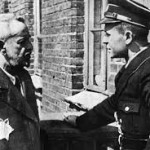
 Over the centuries, people have gone to great lengths to humiliate their enemies. The worst thing for the Jewish people was that over the centuries, there have been so many enemies. To this day, it doesn’t matter that Israel is one of the smallest nations in the world, the Muslim nations don’t even want them to have that small area, and the Muslims weren’t the only enemy of the Jewish people either. The Jews of Europe were legally forced to wear badges or distinguishing garments, like pointed hats, to let everyone know who they were. This practice began at least as far back as the 13th century. It continued throughout the Middle Ages and Renaissance, but was then largely phased out during the 17th and 18th centuries. With the coming of the French Revolution and the emancipation of western European Jews throughout the 19th century, the wearing of Jewish badges was abolished in Western Europe.
Over the centuries, people have gone to great lengths to humiliate their enemies. The worst thing for the Jewish people was that over the centuries, there have been so many enemies. To this day, it doesn’t matter that Israel is one of the smallest nations in the world, the Muslim nations don’t even want them to have that small area, and the Muslims weren’t the only enemy of the Jewish people either. The Jews of Europe were legally forced to wear badges or distinguishing garments, like pointed hats, to let everyone know who they were. This practice began at least as far back as the 13th century. It continued throughout the Middle Ages and Renaissance, but was then largely phased out during the 17th and 18th centuries. With the coming of the French Revolution and the emancipation of western European Jews throughout the 19th century, the wearing of Jewish badges was abolished in Western Europe.
Enter Hitler. The Nazis, under Hitler’s direction, resurrected this practice as part of humiliation tactics during the Holocaust. Reinhardt Heydrich, chief of the Reich Main Security Office, first recommended that Jews should wear identifying badges following the Kristallnacht pogrom of November 9 and 10, 1938. Hitler liked the idea, because Hitler hated the Jews. Shortly after the invasion of Poland in September 1939, local German authorities began introducing mandatory wearing of badges. By the end of 1939, all Jews in the newly-acquired Polish territories were required to wear badges. Upon invading the Soviet Union in June 1941, the Germans again required the Jews in the newly-conquered lands to wear badges. Throughout the rest of 1941 and 1942, Germany, its satellite states and western occupied territories adopted regulations stipulating that Jews wear identifying badges. On May 29, 1942, on the advice of Nazi propaganda minister Joseph Goebbels, Adolf Hitler orders all Jews in occupied Paris to wear an identifying yellow star on the left side of their coats. Only in Denmark, where King Christian X is said to have threatened to wear the badge himself if it were imposed on his country’s Jewish population, were the Germans unable to impose such a regulation. Too bad some of the other nations did not stand up for the Jewish people too.
The Yellow Star was imposed on the Jewish people as part of many psychological tactics aimed at isolating and dehumanizing the Jews of Europe and especially by the Nazis. They were being directly marked as being different and inferior to everyone else. It also allowed the Germans to facilitate their separation from society and subsequent ghettoization, which ultimately led to the deportation and murder of 6 million Jews. Those who failed or refused to wear the badge risked severe punishment, including death. For example, the Jewish Council (Judenrat) of the ghetto in Bialystok, Poland announced that “… the authorities have warned that severe punishment – up to and including death by shooting – is in store for Jews who do not wear the yellow badge on back and front.” The star took on different forms in different regions, but everyone in the area knew what it 
 meant. Of course, the Jewish people hated the badge for what it symbolized, even though the Star of David had stood for the Jewish people since about the 12th century. While the Star of David, known as the Magen David, has continued to be the unofficial symbol of the Jewish people, even on their flag, the Menorah continues to be the official symbol of Judaism (The Jewish people). It seems to me that they would not really want the Star of David after all of the persecution that has been associated with it, but I guess it could be looked at as a badge of honor, as they, as a people survived the persecution.
meant. Of course, the Jewish people hated the badge for what it symbolized, even though the Star of David had stood for the Jewish people since about the 12th century. While the Star of David, known as the Magen David, has continued to be the unofficial symbol of the Jewish people, even on their flag, the Menorah continues to be the official symbol of Judaism (The Jewish people). It seems to me that they would not really want the Star of David after all of the persecution that has been associated with it, but I guess it could be looked at as a badge of honor, as they, as a people survived the persecution.
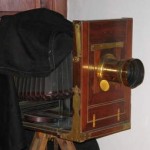 Over the centuries, we have seen many changes in how people preserved their images in picture. From the days of hieroglyphics to the days of digital photography, much has changed in the world of what we now call photography. In fact, many people these day never print a photograph at all, they simply view it, share it, and save it online. Such was not always the case. It use to be that to have a picture taken was an expensive venture, and one that was not done often. Then as photography became more and more common, pictures became a common thing. These days with digital cameras, taking pictures is commonplace, and people even take selfies because they can, and it’s something new and fun.
Over the centuries, we have seen many changes in how people preserved their images in picture. From the days of hieroglyphics to the days of digital photography, much has changed in the world of what we now call photography. In fact, many people these day never print a photograph at all, they simply view it, share it, and save it online. Such was not always the case. It use to be that to have a picture taken was an expensive venture, and one that was not done often. Then as photography became more and more common, pictures became a common thing. These days with digital cameras, taking pictures is commonplace, and people even take selfies because they can, and it’s something new and fun.
The original cameras were big, bulky, and expensive. One avid photographer, George Eastman wanted to bring the world of photography to the masses. George worked on his project until he perfected a Kodak camera that 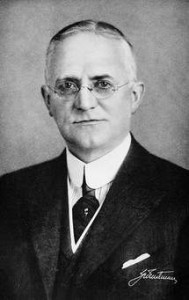 used a roll of dry, transparent, and flexible, photographic film, which he had also invented. That was on September 4, 1888, and both cameras and film…or the lack thereof, have come a long way since then. Still, it is men like George Eastman who had a dream to bring photography into the hands of the masses, who paved the way for the amazing abilities we have today. To me, pictures are gold…pure gold. They tell of at time we couldn’t have known about. All we have is the stories that history has told, and the pictures to show us what it was like.
used a roll of dry, transparent, and flexible, photographic film, which he had also invented. That was on September 4, 1888, and both cameras and film…or the lack thereof, have come a long way since then. Still, it is men like George Eastman who had a dream to bring photography into the hands of the masses, who paved the way for the amazing abilities we have today. To me, pictures are gold…pure gold. They tell of at time we couldn’t have known about. All we have is the stories that history has told, and the pictures to show us what it was like.
In 1883, Eastman announced the invention of photographic film in rolls, but he had no way to use it then. Kodak the company was born in 1888 when the first Kodak camera entered the market. The camera came the Kodak camera could easily be carried and handheld during its operation. The camera came pre-loaded with enough film to take 100 pictures. “You press the button, we do the rest” promised George Eastman in 1888 with this advertising slogan for his Kodak camera. George Eastman wanted to simplify photography and make it available to everyone, not just trained photographers. He had a dream. He knew that there was no reason that everyone could not be a photographer. All that was needed was the right equipment. After the shots in the new camera were taken, the whole camera was returned to the Kodak company in Rochester, New York. There, the film was developed, prints were made, and new film was 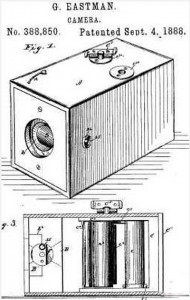 inserted. Then the camera and prints were returned to the customer, so they could take more pictures.
inserted. Then the camera and prints were returned to the customer, so they could take more pictures.
I have to think that this was considered such an amazing invention. I can picture just how excited everyone was. It must have felt like we felt when men walked on the moon for the first time. Like something out of this world. Or maybe that is just the way I would have felt if I were the me of today, seeing the amazing new technology of that day. I think George Eastman must have been an amazing man of incredible vision. So many memories have been preserved because of him. George Eastman was one of the first American industrialists to employ a full-time research scientist. He wanted the best people to do the job. Later, Eastman and his associate would perfected the first commercial transparent roll film which made possible Thomas Edison’s motion picture camera in 1891. It’s funny that something that changed so many things in our world, is now almost obsolete. Digital cameras have replaced all that, and now we are able to save our memories in a whole new way. It was George Eastman who paved the way.
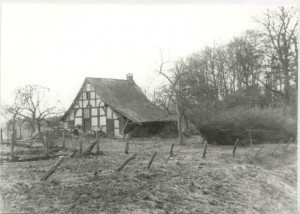 Most of us can trace our roots back to certain people and even certain regions, but not everyone can trace their roots back to a certain house that our ancestor owned in 1628. I can’t say if Johann Schulenberg built the home on the farm, as did my ancestor in the case of, my cousin Princess Diana’s family’s home, Althorpe in England, which has been owned by her family since it was built by Robert Spencer the 2nd Earl of Sunderland in 1688.
Most of us can trace our roots back to certain people and even certain regions, but not everyone can trace their roots back to a certain house that our ancestor owned in 1628. I can’t say if Johann Schulenberg built the home on the farm, as did my ancestor in the case of, my cousin Princess Diana’s family’s home, Althorpe in England, which has been owned by her family since it was built by Robert Spencer the 2nd Earl of Sunderland in 1688.
The Schulenberg family owned a large farm near Schorlingborstel, Bassum, Germany. When I say a large farm, I mean that the land they owned was bigger than many of the surrounding towns at that time in history, and probably many still today. I’m not sure what they have 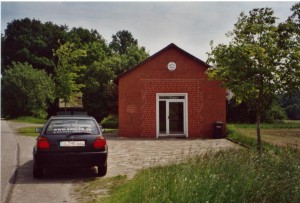 farmed over the years, but I do know that the farm was large enough to need its own Firehouse. I also know over the centuries, the buildings have been so well kept that they are still in use today, and look fantastic.
farmed over the years, but I do know that the farm was large enough to need its own Firehouse. I also know over the centuries, the buildings have been so well kept that they are still in use today, and look fantastic.
It is very strange to think about the fact that over the years, many of our family’s Schulenberg ancestors have lived in those buildings, and worked in those fields. The farm has a large barn and a garage for the farm equipment, as well as a bakery, which I found strange, but I’m sure it was necessary at that time. My guess would also be that there were a number of servants and hired hands over the centuries, so the bakery was probably very busy keeping the household and all the workers in bread. I have to think that the Schulenberg farm was a very large operation. I would love to have seen it 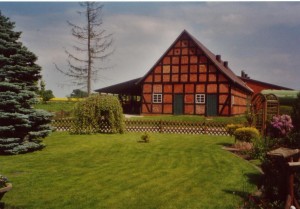 when it was in full swing back then.
when it was in full swing back then.
I don’t know if the farm is used for farming today or if it is simply a very large estate home, but it is still in beautiful condition, and I really like the traditional German design of the siding on the buildings. I also don’t know if the family that lives there now are related for sure or not, but I can say that they have a home that is filled with so much of the history of days gone by. It seems to me, that all that history would literally emanate the property, but maybe that’s just me.

